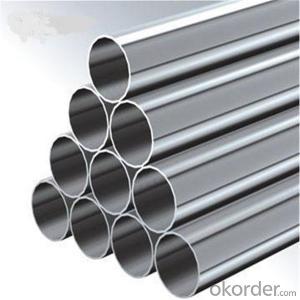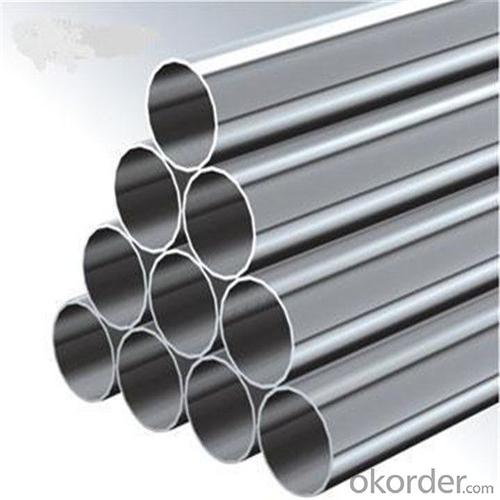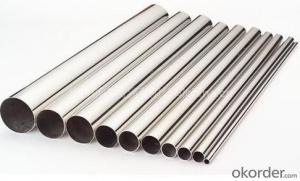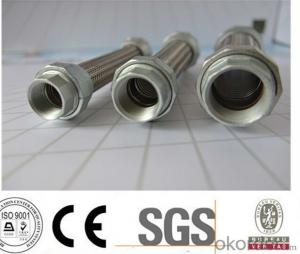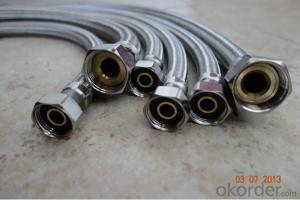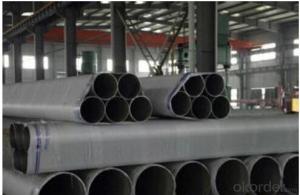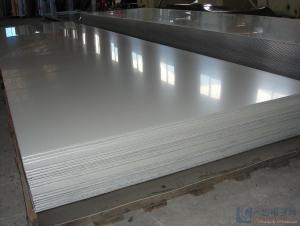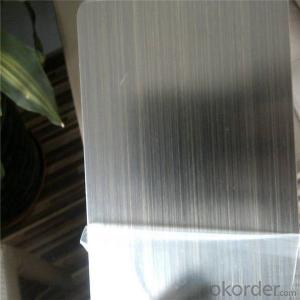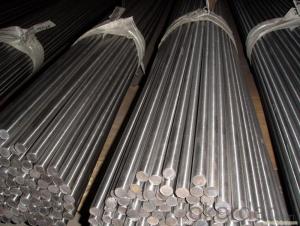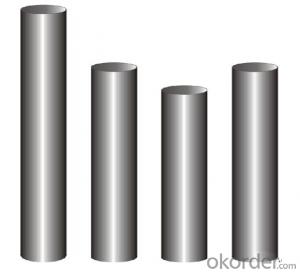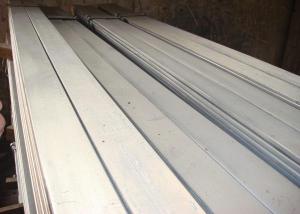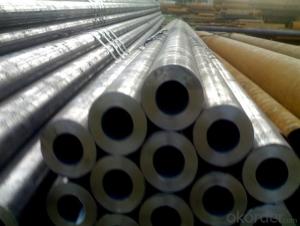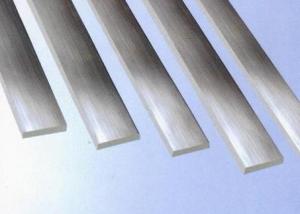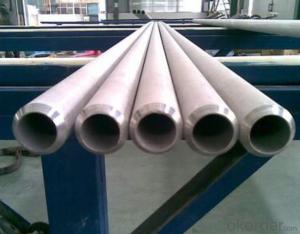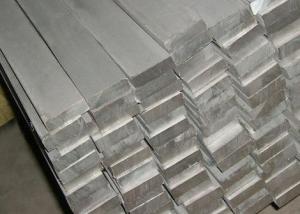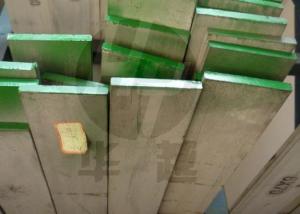SS 316 stainless steel round pipe price list
- Loading Port:
- Shanghai
- Payment Terms:
- TT OR LC
- Min Order Qty:
- 5 m.t.
- Supply Capability:
- 3800 m.t./month
OKorder Service Pledge
OKorder Financial Service
You Might Also Like
Specification
Specification
High quality 304,316 stainlesss steel bar square & round in stock
1.Competitive price and quality
2.Delivery fast
3. Material grade: 201,202,304,316,316L,430
4. Main material:
a) 201 (Ni0.8%-1%)
b) 202 (Ni: 3.0%-4.0%)
c) 304 (Ni: 8% Cr: 18%)
d) 316 (Ni: 10% Cr: 18%)
Outer diameter:5mm-550mm or as your requirement
Length: 6m or as your requirement
Surface:Bright, Polished, Turn smooth(Peeled),Brush, Mill,Pickled
Chemical Composition
Material
Composition | 201 | 202 | 304 | 316L | 430 |
C | ≤0.15 | ≤0.15 | ≤0.08 | ≤0.035 | ≤0.12 |
Si | ≤1.00 | ≤1.00 | ≤1.00 | ≤1.00 | ≤1.00 |
Mn | 5.5-7.5 | 7.5-10 | ≤2.00 | ≤2.00 | ≤1.00 |
P | ≤0.06 | ≤0.06 | ≤0.045 | ≤0.045 | ≤0.040 |
S | ≤0.03 | ≤0.03 | ≤0.030 | ≤0.030 | ≤0.030 |
Cr | 13-15 | 14-17 | 18-20 | 16-18 | 16-18 |
Ni | 0.7-1.1 | 3.5-4.5 | 8-10.5 | 10-14 | |
Mo | 2.0-3.0 |
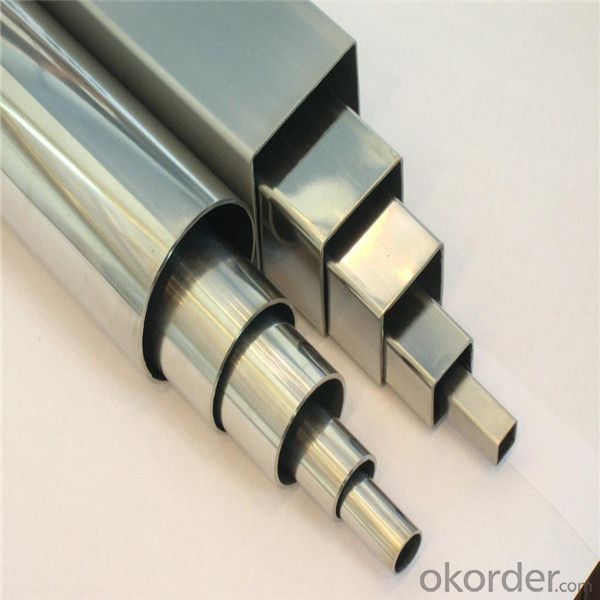
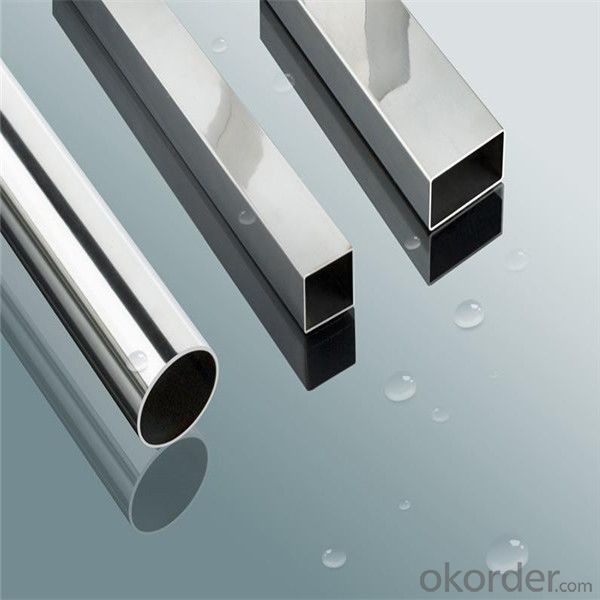
Application
Widely used in petroleum, Foodstuff, chemical industry, construction, electric power,
nuclear energy, biotechnology, machinery, papermaking, shipbuilding, boiler fields etc.
Maintentance
(1) Regular cleaning and maintenance
(2) Pay attention to prevent the occurrence of the phenomenon of surface scratches
(3) Use soap, weak detergent or warm water to remove surface dust, dirt
(4) In addition to the surface of the binder with alcohol or an organic solvent (ether, benzene)
(5) Use neutral detergent or ammonia solution in addition to surface oil
(6) With 10% nitric acid or abrasive detergent in addition to the surface of the embroider
caused by the dirt
Packaging & Delivery
In bundle or as per customer’s requirements
30 days after receipt the 30% downpayment or draft of irrevocable L/C at sight
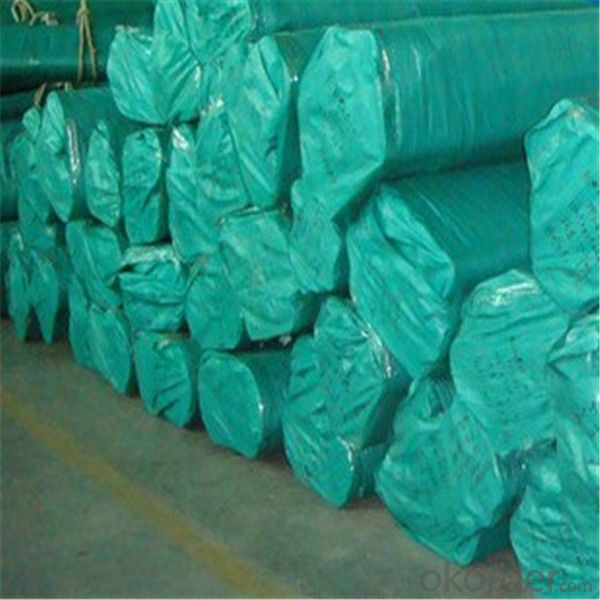
We offering:
Quality Products
More Competitive Prices
Fast Delivery
Quick Reply
Sincere Service
Featured products:
Alloy steel: Combination of steel / Bearing steel// Spring steel/ Cr- mo steel
GB 20Cr/ 40Cr / 42CrMo / 35CrMo/ 20CrMn/GCr15/30CrMnTi…
ASTM 5120 /5140 / 4140/ 4135/ 5152/52100…
JIS SCr420H/ SCr440/ SCM3/ SUP9/SUJ2…
Carbon steel: Carbon tool steel /Carbon Structural Steel
GB 20/ 35 /45/…
ASTM 1020/ 1030/1045…
JIS S20C/ S30C / S45C…
Products Show
- Q: Can stainless steel pipes be used for steam piping?
- Indeed, steam piping can utilize stainless steel pipes. Renowned for its exceptional resistance to corrosion, stainless steel proves to be a superb option for steam-related purposes. In order to endure elevated temperatures and pressure, steam piping necessitates materials capable of withstanding such conditions, a criterion that stainless steel effortlessly meets. Furthermore, stainless steel pipes boast commendable thermal conductivity, ensuring the efficient transfer of heat within steam systems. Nevertheless, it is crucial to carefully deliberate the specific grade of stainless steel and its compatibility with steam applications, as certain grades may prove more suitable than others based on the system's conditions and requirements.
- Q: Can stainless steel pipes be used for air conditioning systems?
- Indeed, air conditioning systems can utilize stainless steel pipes. Given its durability and resistance to corrosion, stainless steel proves to be a fitting material for a wide range of applications, including air conditioning systems. With their exceptional resistance to oxidation and rust, stainless steel pipes guarantee prolonged use and ward off any potential leakage. Moreover, these pipes possess the capacity to withstand elevated temperatures and pressure, rendering them perfect for integration within air conditioning systems.
- Q: What are the factors to consider when selecting a stainless steel pipe for a specific application?
- When selecting a stainless steel pipe for a specific application, there are several factors to consider. These factors include the required corrosion resistance, temperature and pressure requirements, the type of fluid or gas being transported, the pipe size and thickness, the desired strength and durability, and any specific industry standards or regulations that need to be followed. Additionally, the cost, availability, and ease of installation should also be taken into account. Overall, it is important to carefully evaluate these factors to ensure that the chosen stainless steel pipe is suitable for the intended application.
- Q: Can stainless steel pipes be used for food processing equipment?
- Yes, stainless steel pipes can be used for food processing equipment. Stainless steel is a preferred material for food processing due to its corrosion resistance, easy cleaning, and durability. It is also non-reactive, ensuring that it does not contaminate the food being processed.
- Q: Can stainless steel pipes be recycled?
- Yes, stainless steel pipes can be recycled. Stainless steel is a highly recyclable material due to its durability and corrosion resistance. When stainless steel pipes reach the end of their useful life or are no longer needed, they can be collected, processed, and melted down to create new stainless steel products. Recycling stainless steel pipes not only helps conserve natural resources but also reduces energy consumption and emissions associated with mining and manufacturing new materials.
- Q: Are stainless steel pipes suitable for pulp and paper mills?
- Yes, stainless steel pipes are suitable for pulp and paper mills. Stainless steel pipes offer several advantages that make them ideal for use in this industry. Firstly, stainless steel is highly resistant to corrosion and can withstand harsh chemicals and high temperatures commonly found in pulp and paper mills. This resistance to corrosion ensures that the pipes will have a longer lifespan and require less maintenance, reducing downtime and costs associated with repairs or replacements. Additionally, stainless steel pipes are also known for their strength and durability. They can handle high-pressure applications, ensuring a reliable and efficient flow of materials throughout the mill. This is particularly important in pulp and paper mills where large volumes of water, chemicals, and pulp need to be transported. Furthermore, stainless steel pipes are hygienic and easy to clean, making them suitable for applications in the pulp and paper industry that require strict cleanliness standards. The smooth surface of stainless steel pipes also reduces the risk of contamination and ensures a smooth flow of materials, preventing blockages or clogs that could disrupt production. In summary, stainless steel pipes are indeed suitable for pulp and paper mills due to their corrosion resistance, durability, strength, and ease of cleaning. They provide a reliable and efficient solution for transporting materials, contributing to the smooth operation of the mill and minimizing maintenance requirements.
- Q: What is the difference between Type 304 and Type 316 stainless steel pipes?
- Type 304 and Type 316 stainless steel pipes find wide application in diverse industries, each possessing distinct composition and physical characteristics. Type 304 stainless steel, a versatile and commonly utilized grade of stainless steel pipe, boasts a higher proportion of chromium and nickel compared to Type 316. Consequently, it exhibits exceptional resistance to corrosion and durability. Type 304 proves ideal for situations where exposure to corrosive substances remains minimal, such as indoor settings or general-purpose utilization. In contrast, Type 316 stainless steel pipes are renowned for their superior corrosion resistance, particularly in more hostile environments. They contain a higher proportion of molybdenum, which bolsters their ability to withstand pitting and crevice corrosion caused by chloride solutions, like seawater or saltwater environments. This renders Type 316 stainless steel pipes suitable for marine applications, chemical processing plants, and situations where exposure to harsh chemicals or high temperatures is inevitable. Regarding physical properties, Type 316 stainless steel pipes exhibit greater tensile strength and yield strength when compared to Type 304. Consequently, they can endure higher pressures and display enhanced resistance against deformation or cracking under stress. In summary, the primary distinction between Type 304 and Type 316 stainless steel pipes lies in their corrosion resistance and physical properties. Type 304 proves suitable for general-purpose use and indoor environments, while Type 316 is preferred for applications necessitating superior corrosion resistance and strength, particularly in aggressive or high-temperature conditions.
- Q: What is the difference between schedule 10 and schedule 160 stainless steel pipes?
- The main difference between schedule 10 and schedule 160 stainless steel pipes is their thickness and pressure rating. Schedule 10 pipes have a thinner wall thickness and a lower pressure rating compared to schedule 160 pipes, which have a thicker wall thickness and a higher pressure rating. Additionally, schedule 160 pipes are typically used for high-pressure applications, while schedule 10 pipes are suitable for low to medium-pressure applications.
- Q: What is the difference between 440C and 440F stainless steel pipes?
- The 440 series encompasses two types of stainless steel, namely 440C and 440F. These variants differ slightly in their composition and properties. 440C stainless steel, a high-carbon martensitic type, boasts chromium content that bolsters its corrosion resistance and hardness. It is renowned for its exceptional wear resistance, commendable strength, and ability to maintain sharpness. Its elevated carbon content ensures excellent hardness, albeit at the expense of increased difficulty in machining when compared to stainless steels with lower carbon levels. Consequently, 440C finds common application in scenarios necessitating high strength, corrosion resistance, and wear resistance, such as cutting tools, bearings, and surgical instruments. Contrarily, 440F stainless steel represents a free-machining version of 440C. Like its counterpart, it is a high-carbon martensitic stainless steel; however, it incorporates sulfur to enhance its machinability. The sulfur acts as a lubricant during the machining process, facilitating easier and faster cutting. Nevertheless, the addition of sulfur marginally diminishes 440F's corrosion resistance and toughness in comparison to 440C. Consequently, 440F finds utility in applications demanding extensive machining, such as automotive components, fasteners, and valve parts. To sum up, the primary distinction between 440C and 440F stainless steel lies in their machinability and sulfur content. While 440C offers superior corrosion resistance and hardness, it may prove more challenging to machine. On the other hand, 440F is more manageable to machine but exhibits slightly reduced corrosion resistance and toughness. The selection between the two depends on the specific requirements of the application, with 440C being preferred when prioritizing corrosion resistance and wear resistance, and 440F being suitable for scenarios necessitating extensive machining.
- Q: How do you calculate the weight of stainless steel pipes?
- In order to determine the weight of stainless steel pipes, several factors should be taken into account. Firstly, one needs to establish the pipe's outer diameter (OD) and thickness (T). Once these measurements have been obtained, the weight per foot (or meter) of the stainless steel pipe can be calculated using the following formula: Weight per foot (or meter) = (OD - T) * T * 0.0246615 It should be noted that this formula assumes the stainless steel pipe is of a circular shape. By multiplying the weight per foot by the length of the pipe in feet (or meters), the total weight can be determined. It is important to acknowledge that the density of stainless steel may vary depending on the specific grade and composition. Therefore, the weight calculated using this formula will provide an approximate value. For precise weight calculations, it is advisable to consult a reference table or contact the manufacturer for more accurate information.
Send your message to us
SS 316 stainless steel round pipe price list
- Loading Port:
- Shanghai
- Payment Terms:
- TT OR LC
- Min Order Qty:
- 5 m.t.
- Supply Capability:
- 3800 m.t./month
OKorder Service Pledge
OKorder Financial Service
Similar products
Hot products
Hot Searches
Related keywords
